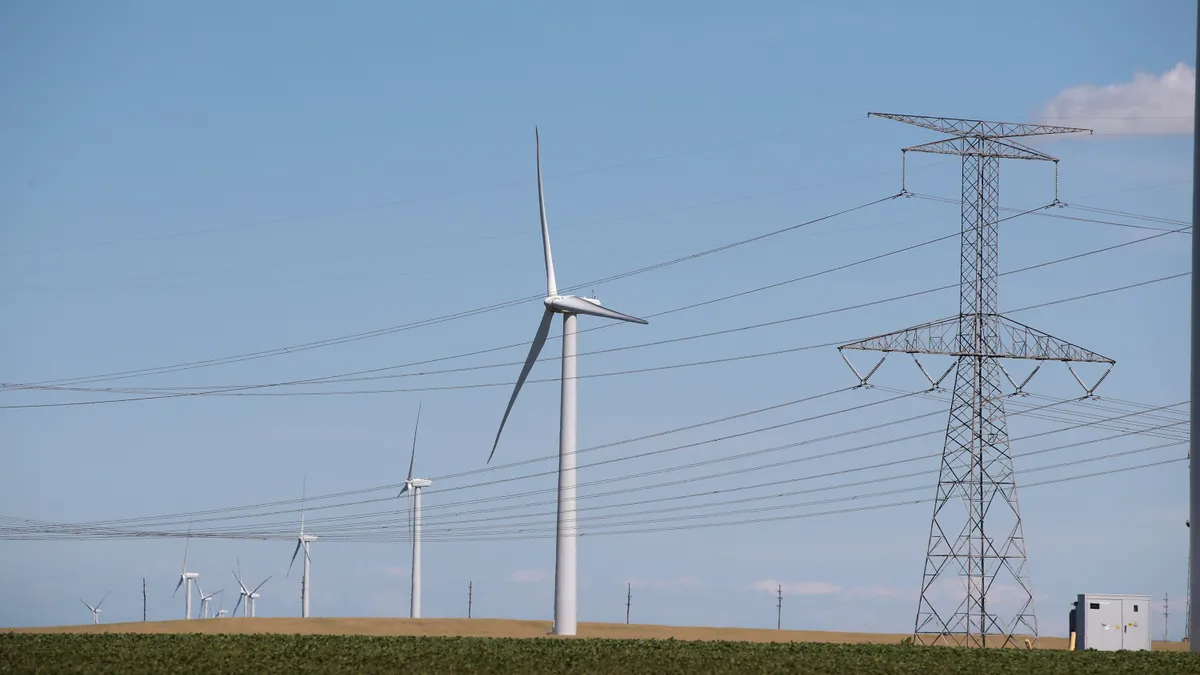The following is a contributed article by Armond Cohen, executive director and co-founder of Clean Air Task Force and Liza Reed, research manager for low carbon technology policy at the Niskanen Center.
Most analyses find that to decarbonize U.S. energy and achieve our climate goals we'll need to double or triple the size of our electricity transmission system by 2050. That means building new power lines and electricity infrastructure in just about every corner of the country to connect low-cost wind and solar power to the grid, while backing it up with always-available power. We'll need to do this at a pace and scale the likes of which we've never seen before, and it's time everyone involved in U.S. electricity transmission acknowledges a simple truth: Our current approach is not going to get us there.
Transmission building in the U.S. today is a fragmented system of permitting, planning and paying, scattered over dozens of federal, state and local authorities. We are trying to build a patchwork system on a project-by-project basis without a national plan. Every local or regional stakeholder can claim that a given transmission project is not needed, is being built only for private profit, or should simply go 'somewhere else.'
This Balkanized approach, subject to multiple vetoes and conflicting interests, leads to paralysis — with the U.S. only having completed a few new significant lines in the last 12 years, and each line taking more than decade from planning to energizing. We do not have the necessary mechanisms to identify, prioritize and build the network of interstate, high-capacity lines needed in the next 30 years. We're going to need to have a different national conversation about how to fix this system before we blow through our carbon budget and pass irreversible climate tipping points.
It's time private industry, utilities, and state and regional regulators come together with national regulators and lawmakers to acknowledge the shortcomings of our current system, and begin fashioning a solution suited to the national and global challenge. This will likely require a profound rebalancing of private and public roles in building critical infrastructure, and a complete rethinking of the way we go about expanding electricity transmission.
Clean Air Task Force and the Niskanen Center recently convened some of the country's leading experts from academia, industry and environmental advocacy to assess this challenge, and synthesized our findings in a report. We found that adding inclusive stakeholder participation and a clear and consistent process for building transmission infrastructure is critical to managing the tension between public and private interest.
We also outlined a wide range of options for revamping U.S. transmission development. At one end is a better organized private sector led with a consistent review process and more robust public benefit. At the other end is much greater government engagement, including the National Transmission Organization that would plan, site and fund a national grid.
These possibilities sit on a spectrum and creative hybrids are possible; we are not claiming to know the best plan. What we can say with certainty is that stakeholders need to come to the table, acknowledge the tradeoffs in approaches, and begin working in good faith toward a system that matches the scope and scale of our challenge. We need to reassess the right balance between private and public initiatives, keeping the overarching U.S. energy goals in mind.
It won't be an easy conversation, but it will be a critical one to the future of the U.S. electricity transmission system, to U.S. climate action, and the planet.
Let's have it now.













